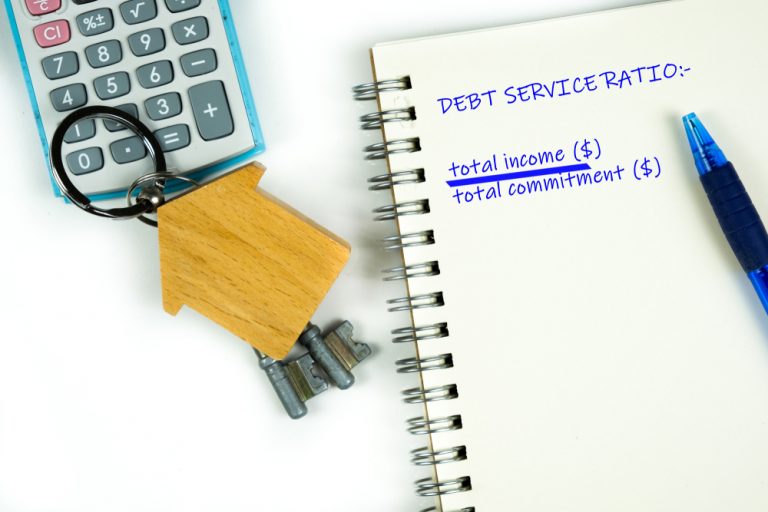Are you in debt and wondering what your debt to income ratio is? Well, you are in the right place.
What is a Debt to Income Ratio?
Your debt to income ratio is the portion of your income that’s dedicated to repaying your outstanding debts. It’s calculated by dividing your monthly debt payments to your gross monthly earnings.
Let’s say you bring home $5,000 USD per month and you pay $1,500 USD for your mortgage, $400 USD for your credit card bills, and $100 USD for your car loan. In total, you’re required to pay $2,000 USD per month for your debts.
By dividing $2,000 USD with $5,000 USD, you can determine that your debt to income ratio is 40 percent.
This figure has a significant impact on how lenders view you as a borrower. The lower your debt to income ratio, the better chances that they’ll let you borrow money from them because you’ve shown your reliability in handling debt.
Here are the different ways that you can decrease your debt to income ratio and reduce your debt:
Have a Debt Repayment Plan
There are different debt repayment plans that can help you decrease your debt to income ratio. You must study the various strategies to find the one that works for your financial needs and situation.
Each tactic has its own advantages and disadvantages. That’s why it pays to get to know them in-depth.
These are the different debt repayment plans that you should consider:
- Avalanche Method – With this strategy, you start repaying your debts beginning with the account that has the highest interest rate while paying the minimum amount for the others. Once you’ve eliminated the first one, you can then move on to the next account. This method makes sense because you don’t lose money over interest.
- Snowball Method – In this method, you start with the smallest balance and work your way up to the largest amount. You still have to pay the minimum on all accounts while putting the extra money on the one with the lowest balance.
This strategy works since it motivates you and gets you in the habit of being financially responsible. You’ll realize that now is the best time to pay off your debt.
- Balance Transfer – This technique can be used together with the avalanche method. This entails moving your balance from one account with hefty interest to another with a much lower rate. You’ll end up paying less in interest and dedicate that amount to the repayment of the principal loan.
- Personal Loan – You also have the option to take out one big personal loan that covers all your debts. This setup is ideal if you have several accounts. Consolidating and refinancing your debts allow you to save on interest and manage repayment for just one account.
It also helps your credit scores and significantly decreases your debt to income ratio.
Find a Side Hustle
Another way to reduce your debt to income ratio is by adding another revenue stream. If you have a 9-to-5 job, you can make money with the sharing economy without compromising your responsibilities to your current employer.
This side hustle has a freelancing setup that you can do during your spare time. The sharing economy encompasses a lot of services from transportation to house or apartment renting and even talent-sharing.
Increase Your Monthly Repayments
You can also minimize your debt to income ratio by increasing the amount you allocate for debt repayment.
Because of interest, paying just the minimum due can actually cost you more money in the long-run, especially compound interest, which is added to the principal when you miss a payment.
Not only will you become debt-free quicker when you increase your monthly repayments, but you’ll also be on your way to saving for your future because you’ve already developed the habit of setting money aside.
You just tweak the process a little and channel it towards your retirement nest egg or your travel funds and other financial goals when you’ve finally eliminated all your debts.
Try Your Hand at Trading
Trading stocks and other financial products is an excellent way to bring in more money, which you can use to repay your debts. It’s the short-term counterpart of investing, but with the same profits.
Depending on the strategy that you use, trading a flexible setup that allows you to earn passive or active income.
Essentially, you’re making your money work for you instead of having it get eaten up by inflation in your savings account.
You earn through dividends or compound interest, which is the amount that’s added to the principal or capital when you reinvest your earnings instead of cashing it out.
It can be overwhelming to think about all the knowledge that you need to acquire for this venture. Fortunately, there are lots of platforms online that provide resources for this industry.
Summary
Your debt to income ratio has a significant influence on how lenders and other financial institutions perceive your reliability and credibility as a borrower.
Reduce this figure and your debt by having a debt repayment plan. You can also look into trading to grow your wealth or find a side hustle as an additional income stream.
Lastly, increase your monthly repayments to avoid losing money on hefty interest rates.

Brian is a Dad, husband, and an IT professional by trade. A Personal Finance Blogger since 2013. Who, with his family, has successfully paid off over $100K worth of consumer debt. Now that Brian is debt-free, his mission is to help his three children prepare for their financial lives and educate others to achieved financial success. Brian is involved in his local community. As a Financial Committee Chair with the Board of Education of his local school district, he has helped successfully launch a K-12 financial literacy program in a six thousand student district.


Comments are closed.